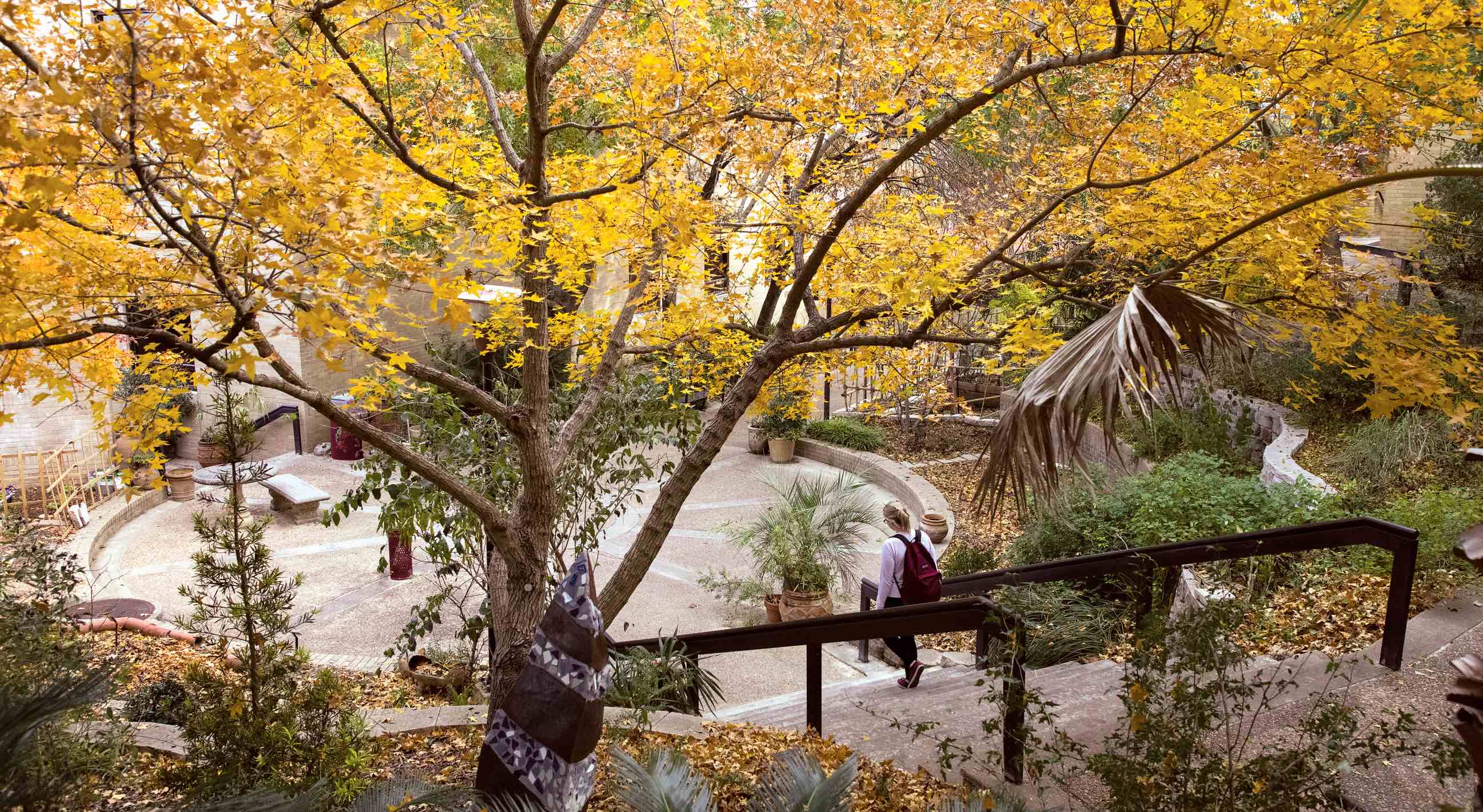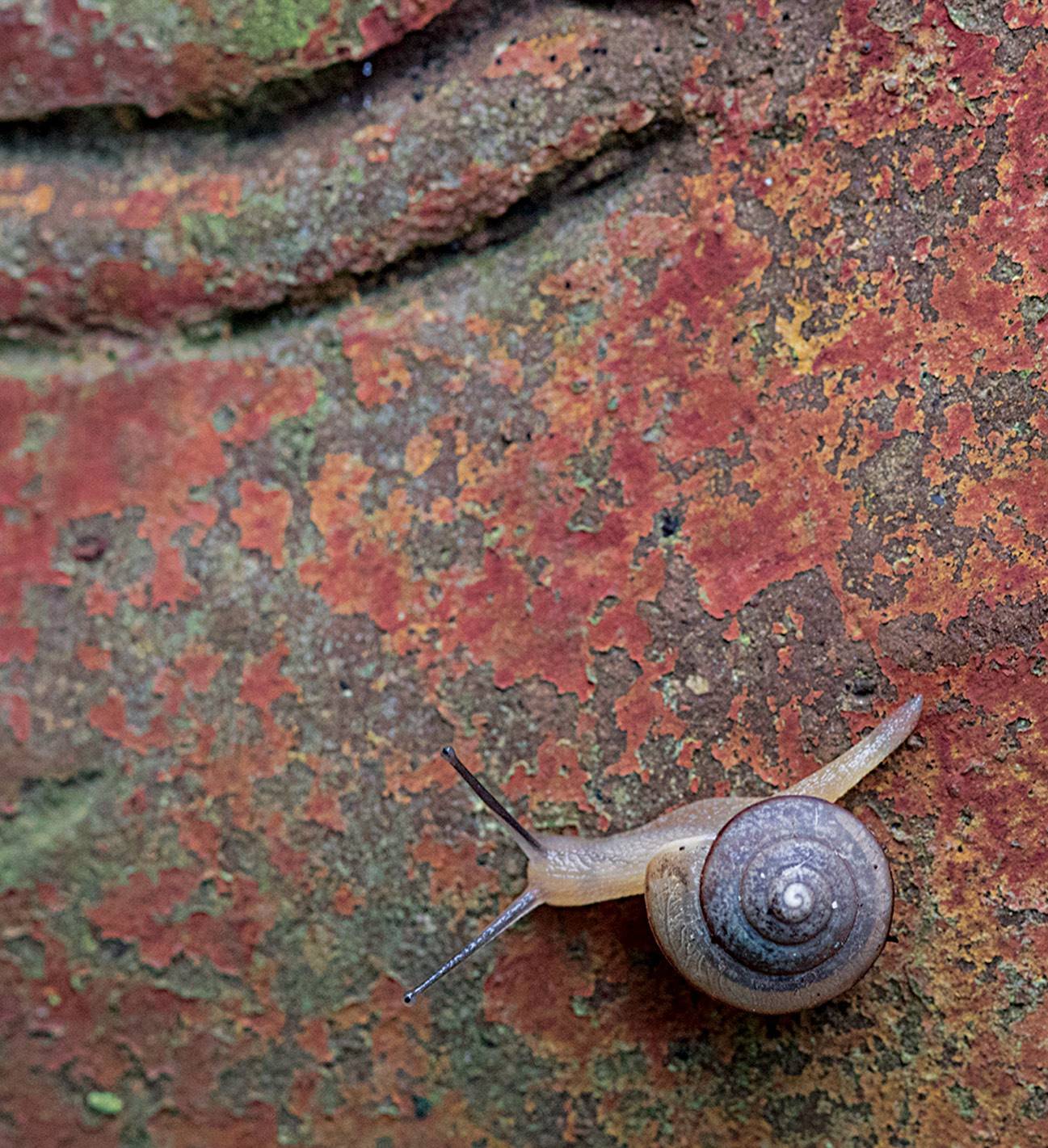
Things are Blooming in the Living Library
by Tracy Hobson Lehmann
Things get a little wild on the northeast fringes of the San Marcos Campus. There, in one of the university’s most scenic laboratories, students might be serenaded by chirping frogs as they lounge in hammocks. Deer or a fox might forage among the plants.
Natural beauty blossoms according to plan in the sky-capped Living Library. Since 2001, Texas State students in the landscape design class have mapped out the plantings that wind around the Agriculture Building and Hines Academic Center. Those plans take root and thrive thanks to students in other horticulture classes who plant and tend the landscape.
“I try to really get the students involved in a hands-on way where they can see and learn and experience,” says Dr. Tina Marie Cade, the Department of Agriculture professor who oversees the gardens. The living laboratory provides in-depth lessons in plant cultivation and other practices, such as beekeeping, rainwater collection, permaculture, and vermicomposting. The space also opens a window for observing the symbiosis of flora and fauna of all sorts. With its combination of food and water sources for insects, birds, and mammals, the Living Library earned the National Wildlife Foundation’s designation as a Certified Wildlife Habitat. It’s registered as a Monarch Waystation, too, because it provides milkweeds and other plants to feed and shelter monarch butterflies and their caterpillars.

“It’s not a giant garden,” Cade says. “It doesn’t take a whole lot of acreage to help network for the wildlife.”
Mice that live in the garden’s limestone cliffs began nibbling on melons and cucumbers. Before long, Cade saw a problem-solving owl swoop down over the landscape. Students occasionally find a nonvenomous rat snake or blind snake in the space, all part of the food chain.
“We like that we have an ecosystem,” says Cade.
The Living Library comprises more than a dozen individual garden styles. One features shade-loving plants; another herbs. Space is designated for salvias, and another area for cactuses. Students raise vegetables and fruit in the organic area, and the Zen garden encourages visitors to chill.
Students, faculty, and staff find their way to the garden to study, reflect, and maybe practice yoga. Some make use of the hammocks students designed into one area, while others hone photography and art skills in the space. Still others stop to scrawl clever philosophical statements on a chalkboard in the outdoor classroom area.
Elsewhere on campus, plants stick to a palette specified in the university’s master plan. In the Living Library, students cultivate hundreds of varieties of plants used in the nursery and landscaping industry.
“If you walk through the gardens, you might think, ‘Wow, this is a weird, eclectic mix of landscaping,’ but that’s on purpose,” Cade says. From the professor’s perspective, it’s a laboratory where students learn not only plant names but also how they grow through the seasons.
That can be especially instructive as plants get thirsty in summer. Only two of the beds have irrigation systems, so student gardeners water almost everything by hand. They develop deeper appreciation for native plants and those adapted to the sometimes harsh and dry Central Texas climate.
Cade’s hands-on teaching philosophy also reaches outside the Living Library and into the community. Rather than giving hypothetical assignments to landscape design students when the classes convene every other spring semester, Cade identifies a handful of public projects.
Students interview clients, work up scale drawings, and pitch their proposals at sites for the city of San Marcos, not-for-profit agencies, neighborhoods, and even the university. Sometimes one idea stands out, and other times elements of different plans are chosen, says Amy Kirwin, manager of community initiatives for the city of San Marcos.
Kirwin has worked with student designers on a project at a senior center, which will be implemented in phases after capital improvements work wraps up, and in pocket parks around the city. Students might have to plan around traffic and sight lines, or design with plants that will survive without irrigation.
“They’re getting real-world experience working with a municipality and some of the real-world parameters they will face,” Kirwin says.
On campus, Cade observes how student ideas blossomed at the sloping site around the Education Building. Their plan called for a pathway, sitting area, and cascading woodland plants. “You can really see their ideas on the plan and how it turned out in real life,” she says. ✪